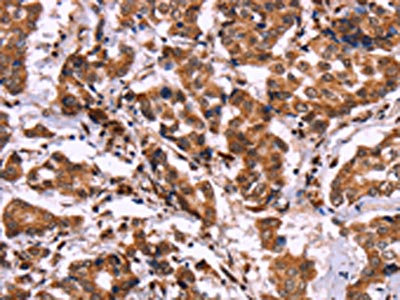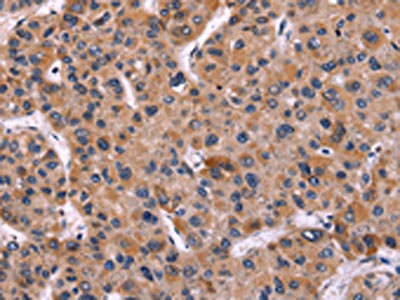
The image on the left is immunohistochemistry of paraffin-embedded Human breast cancer tissue using CSB-PA555338(CARD11 Antibody) at dilution 1/40, on the right is treated with fusion protein. (Original magnification: x200)
CARD11 Antibody
CSB-PA555338
ApplicationsELISA, ImmunoHistoChemistry
Product group Antibodies
ReactivityHuman, Mouse
TargetCARD11
Overview
- SupplierCusabio
- Product NameCARD11 Antibody
- Delivery Days Customer20
- ApplicationsELISA, ImmunoHistoChemistry
- CertificationResearch Use Only
- ClonalityPolyclonal
- ConjugateUnconjugated
- Gene ID84433
- Target nameCARD11
- Target descriptioncaspase recruitment domain family member 11
- Target synonymsbcl10-interacting maguk protein 3; BENTA; BIMP3; CARD-containing MAGUK protein 1; carma 1; CARMA1; caspase recruitment domain-containing protein 11; IMD11; IMD11A; PPBL
- HostRabbit
- IsotypeIgG
- Protein IDQ9BXL7
- Protein NameCaspase recruitment domain-containing protein 11
- Scientific DescriptionThe protein encoded by this gene belongs to the membrane-associated guanylate kinase (MAGUK) family, a class of proteins that functions as molecular scaffolds for the assembly of multiprotein complexes at specialized regions of the plasma membrane. This protein is also a member of the CARD protein family, which is defined by carrying a characteristic caspase-associated recruitment domain (CARD). This protein has a domain structure similar to that of CARD14 protein. The CARD domains of both proteins have been shown to specifically interact with BCL10, a protein known to function as a positive regulator of cell apoptosis and NF-kappaB activation.
- ReactivityHuman, Mouse
- Storage Instruction-20°C or -80°C
- UNSPSC12352203

